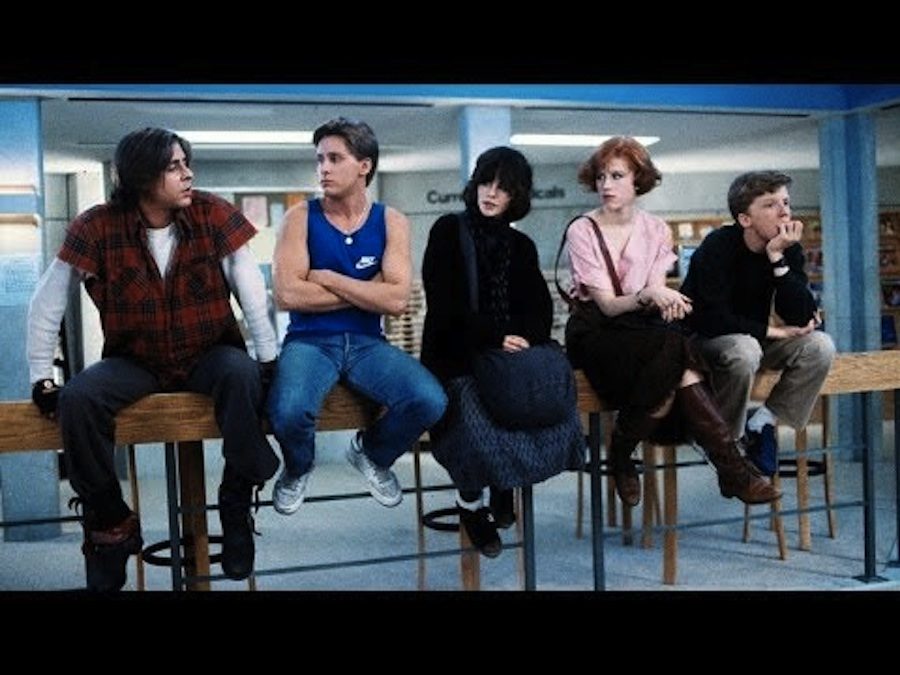5 reasons “The Breakfast Club” is still a must-see
May 16, 2016
The Breakfast Club is one of the many 1980’s classics that still hold an influential position in cinema today. But what makes The Breakfast Club different than the other teen films that emerged during this time period? This R-rated movie caught the attention of the public upon its release, and still holds a place in the heart of many Americans. One of director John Hughes’ most renowned projects, The Breakfast Club has elements that allow this classic to double as a relatable, modern film.
Depiction of high school cliques.
Most high school students will admit that cliques exist at their school. The Breakfast Club brings together kids from all walks of life – the princess Claire, also known as miss popularity; the jock, Andrew; the nerd, Brian; the rebel, Bender; and the basket case, Allison. The cliques in The Breakfast Club are exaggerated for drama as well as comedic purposes. Once the characters are introduced and cliques are revealed, the viewer starts to relate with one of the characters more than the others, which helps create a personal connection between the viewer and the film.
Much of the emotion displayed by the actors wasn’t acting.
Judd Nelson, who played the rebel John Bender, almost got fired for his attitude toward Molly Ringwald, who played the princess Claire Standish. While on-camera teasing was encouraged by Hughes, the off-camera taunting was not. The friction between the two actors was so disruptive that Judd Nelson was asked to leave the room for certain takes of Ringwald. Hughes also revealed that much of the acting was adlib, including the scene where the characters told their story about what landed them in detention.
It shows people’s ability to overcome each other’s differences.

If the princess of the school can grow to like the troublemaker, everyone can find a way to get along with each other. The teenagers in The Breakfast Club were from five very different walks of life, which created a sense of animosity between them in the opening scenes of the film. However, as the detention dragged on and there was nothing to do but talk to each other, the different personalities began to warm up to one another. The newfound friendships made for both an entertaining film and a lesson that differences don’t have to draw lines between you and those around you.
Its recognition of teenage struggles.
Toward the end of the movie, just when the viewer feels as though they’ve gotten the whole picture on each character’s life, the light hearted script takes a dramatic turn. While the group sits in a circle discussing what landed them in detention, Claire admits to skipping class to go shopping, Bender identifies himself as a regular weekend detention goer, who this time pulled the fire alarm, and Andrew bullied another student. Brian’s response is much darker. A firecap to a gun went off in his locker. The others hesitantly ask him why he had a gun in his locker, and, voice shaking, he admits he’s failing shop and has to get good grades, and couldn’t live with lower than an A.
Happy endings.
Some critics of The Breakfast Club say the ending was too good to be true. The princess, Claire, gives her new romantic interest, Bender an earring to remember her by as they kiss in front of Claire’s parents’ car. The jock, Andrew, and the basket case, Allison also find an interest in eachother after Claire gives Allison a rejuvenating makeover. But many can admit that they enjoy a sappy ending to a high school flick. It’s a picture perfect wrap up, closing with the iconic scene of Bender walking through the football field and raising his fist triumphantly to the song, “Don’t You (Forget About Me)” by Simple Minds.













